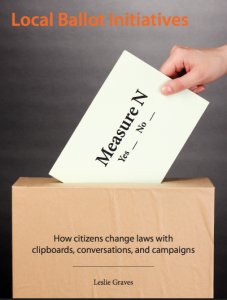Blog
If you could change one thing about your local government, what would it be?
April 1, 2013

If you could change one thing about your local government, what would it be? What’s stopping you?
People across the country are frustrated with public officials and with the government, but don’t always know where to turn. Reform at a national level is nearly impossible, and even the state government can be too difficult to change sometimes. If you try to effect change by working within the system, you’re likely to bump up against delays, unwilling legislators, bureaucracy, and a general change-averse attitude.
Luckily, there’s a tool available to millions of Americans that allows you to circumvent the legislative process and place an issue straight on your local ballot: the local ballot initiative. The initiative allows you to leverage your already-established grassroots base to effect change more quickly and more democratically, and 48 states have at least one local government that authorizes citizens to use it.
The ballot initiative process – on the surface – is easy: draft the language of the new law you want to see enacted, collect enough signatures on a petition to place it on the ballot, submit the signatures to your local election officials, and wait for the word that it’s been approved. But when you delve into the details, there are countless smaller steps that are crucial yet easy to overlook. There are also strict laws about how many signatures you need on your petition, when and for how long you can gather them, what size and color paper the petition must be printed on, how large the font on the petition has to be – the list goes on.
Sound confusing? It isn’t, if you have the right information. And that is exactly what the Lucy Burns Institute can provide. Their booklet, Local Ballot Initiatives: How citizens change laws with clipboards, conversations, and campaigns, walks you through the steps of the process, from drafting the language of the proposed law to submitting the final petition and requisite signatures to the right person. The research team at Ballotpedia has also compiled information about the local I&R process and built 50 state-specific pages. Here you can find details for each state on which jurisdictions allow local ballot initiatives, how many signatures are required to qualify a local measure on the ballot, how long you can circulate the petitions, subject restrictions on the types of laws that can be changed through the local initiative, and much more.
Visit Ballotpedia.org to request a free copy of the guide, research the laws in your state, or learn more about local ballot measures.
What will you change?
